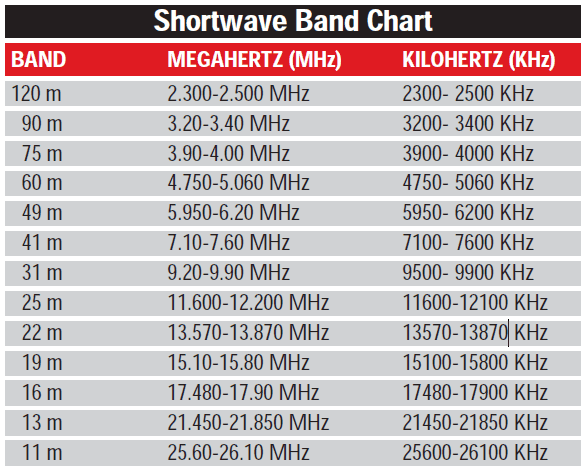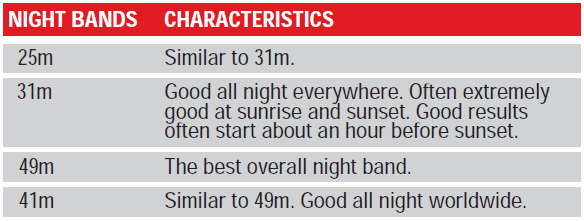Shortwave Radio Bands 101

Understanding the concept of bands
If you are new to shortwave radio, then the first thing you need to understand is the concept of radio bands.
If you have ever listened to AM or FM radio, then you already know what a band is.
The AM band is the frequency range from 530 to 1710 kilohertz.
The FM band is 88 to 108 megahertz.
A band is simply a specified frequency range where stations are located.
Shortwave radio bands are very similar in concept except there are multiple shortwave bands with their own names like 25 meters, 31 meters, 49 meters, etc. (often abbreviated as 25m, 31m and 49m respectively).
The chart below is a list of the shortwave radio bands used for international shortwave broadcasts and their corresponding frequency ranges.
Because shortwave signal propagation depend on factors such as the sun, the ionosphere, and interaction with the earth itself, signals cannot be heard on all bands throughout the day. Some bands are best during the daylight hours, and some are best at night.
In general, the bands with frequencies below 13 MHz (13000 KHz) are better at night and the bands with frequencies above 13 MHz (13000 KHz) are best during the day.
Generally speaking, the best time for listening to shortwave (when signals are strongest and clearest) is the time around sunrise and sunset. Usually there’s a two-hour window for optimal listening, but it may extend up to three or four hours.


